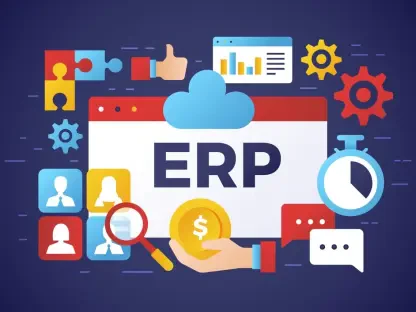As the cloud computing landscape continues to evolve at a breakneck pace, few players stand out like Amazon Web Services (AWS), which has recently reported some of its strongest growth in years. To dive deeper into this phenomenon, I had the privilege of speaking with Vijay Raina, a renowned expert in enterprise SaaS technology and software design. With his extensive background in cloud infrastructure and thought leadership in software architecture, Vijay offers unique insights into AWS’s meteoric rise, the role of AI in driving demand, and the broader implications for the industry. In our conversation, we explored the factors behind AWS’s impressive financial performance, the strategic moves fueling its expansion, and the challenges of navigating a hyper-competitive market while balancing innovation and investment.
How has AWS managed to achieve a 20% year-over-year growth, and how does this compare to its performance in recent years?
I’m thrilled to break this down. AWS’s 20% growth is a significant milestone, especially since it’s the fastest pace we’ve seen since 2022. This uptick reflects a rebound from a period of slower growth, likely due to market saturation and economic headwinds in prior years. The third-quarter sales of $33.1 billion through the first nine months of 2024 signal a robust recovery, driven by renewed demand for cloud services. Compared to previous years, where growth hovered in the mid-teens, this jump shows AWS is capitalizing on emerging opportunities, particularly in high-demand sectors.
What do you see as the primary drivers behind AWS’s strong third-quarter sales of $33.1 billion?
The biggest driver, in my opinion, is the explosion of demand for cloud infrastructure, especially from industries undergoing digital transformation. Companies are increasingly moving their operations to the cloud to scale efficiently, and AWS has positioned itself as the go-to provider with its vast suite of services. Additionally, the timing of this growth in Q3 suggests seasonal upticks in enterprise spending and a push toward modernizing IT systems. AWS’s ability to offer tailored solutions for diverse workloads, from storage to analytics, has kept it ahead of the curve.
Can you elaborate on the role the AI industry is playing in AWS’s current success?
Absolutely, AI is a game-changer for AWS right now. The unprecedented need for computing power to train and deploy large-scale AI models has created a massive opportunity. Many AI companies rely on AWS’s infrastructure for its scalability and reliability. This surge in demand isn’t just a trend—it’s a fundamental shift in how tech is evolving, and AWS is at the forefront, powering everything from machine learning algorithms to generative AI applications. Their focus on AI-optimized services is clearly paying off.
With AWS’s operating income rising to $11.4 billion in Q3, what strategies do you think contributed to this financial leap?
This jump from $10.4 billion last year is impressive and points to a mix of operational efficiency and strategic pricing. AWS has likely streamlined its data center operations, reducing costs while scaling up capacity. They’ve also been smart about monetizing high-margin services like advanced analytics and AI tools, which bring in more revenue per customer. Additionally, their focus on long-term contracts with enterprises ensures a steady income stream, buffering against market fluctuations.
What market dynamics or internal changes at AWS have led to this re-acceleration of growth, as mentioned by Amazon’s leadership?
The re-acceleration to 20.2% year-over-year growth ties into a broader market shift. Post-2022, many businesses delayed cloud migrations due to economic uncertainty, but now there’s a renewed push to modernize. Internally, AWS has ramped up its innovation pipeline, rolling out new tools and services that cater to emerging needs like AI and edge computing. Their aggressive investment in infrastructure capacity also means they can handle more clients without bottlenecks, which is a key factor in regaining momentum.
AWS added 3.8 gigawatts of capacity in the past year. Can you explain the significance of this for meeting customer demand?
This is huge. Adding 3.8 gigawatts of capacity means AWS has significantly expanded its data center power to support more workloads. In simple terms, it’s like adding more lanes to a highway to handle increased traffic. With the surge in demand for cloud services, especially from AI and big data applications, this extra capacity ensures AWS can meet customer needs without delays or performance issues. It’s a proactive move to stay ahead of demand curves.
How do expansions like the new infrastructure region in New Zealand and others in the pipeline help AWS maintain a competitive edge?
Expanding into regions like New Zealand is a strategic play. It reduces latency for local customers, which is critical for real-time applications, and it helps AWS comply with data sovereignty laws that require data to stay within certain borders. These new regions also tap into growing markets, giving AWS a foothold before competitors can catch up. With three more regions in the works, they’re signaling a commitment to global accessibility, which is a big differentiator in a crowded market.
Can you shed light on how partnerships with AI-focused companies strengthen AWS’s market position?
Partnerships in the AI space are a brilliant move for AWS. Collaborating with innovative players allows AWS to integrate cutting-edge AI technologies into its platform, making it a one-stop shop for businesses looking to adopt AI solutions. These deals also create a network effect—more partners mean more use cases, which attract more customers. It’s a win-win that not only boosts AWS’s credibility in the AI domain but also locks in long-term revenue through collaborative projects.
There’s some skepticism about whether the cloud infrastructure market is overhyped. What’s your perspective on this concern?
I understand the skepticism, especially with massive deals and investments floating around. There’s always a risk of over-enthusiasm in tech, where expectations outpace reality. However, the demand for cloud infrastructure, particularly for AI, is grounded in real needs—businesses aren’t just jumping on a bandwagon; they’re solving actual scalability problems. That said, the industry must be cautious about overbuilding capacity, which could lead to underutilized resources if demand cools. For now, though, I think the growth is sustainable if managed wisely.
How do you see AWS balancing the massive demand for AI infrastructure with the potential risks of over-investing?
This is a delicate balance. AWS seems to be taking a calculated approach by closely monitoring demand signals and monetizing new capacity quickly. They’re not just building for the sake of building; they’re aligning investments with customer commitments. By focusing on flexible, scalable infrastructure, they can adjust if demand shifts. It’s also about diversifying their offerings so that if one area like AI slows, other services can pick up the slack. It’s a smart, risk-mitigated strategy.
What’s your forecast for the future of cloud infrastructure, especially with the rapid advancements in AI and competing technologies?
Looking ahead, I believe cloud infrastructure will remain a cornerstone of technological progress, especially as AI continues to evolve. We’re likely to see even deeper integration of AI capabilities into cloud platforms, making them smarter and more autonomous. Competition will intensify, pushing providers like AWS to innovate faster in areas like sustainability and cost efficiency. My forecast is optimistic—cloud adoption will keep growing, but the winners will be those who can adapt to changing needs while maintaining trust and reliability.









